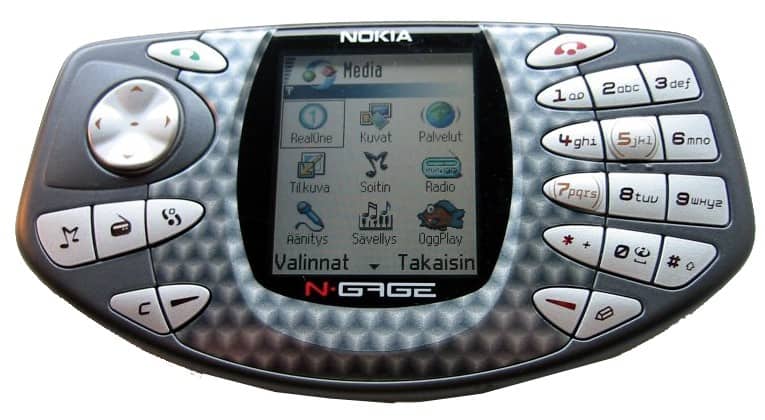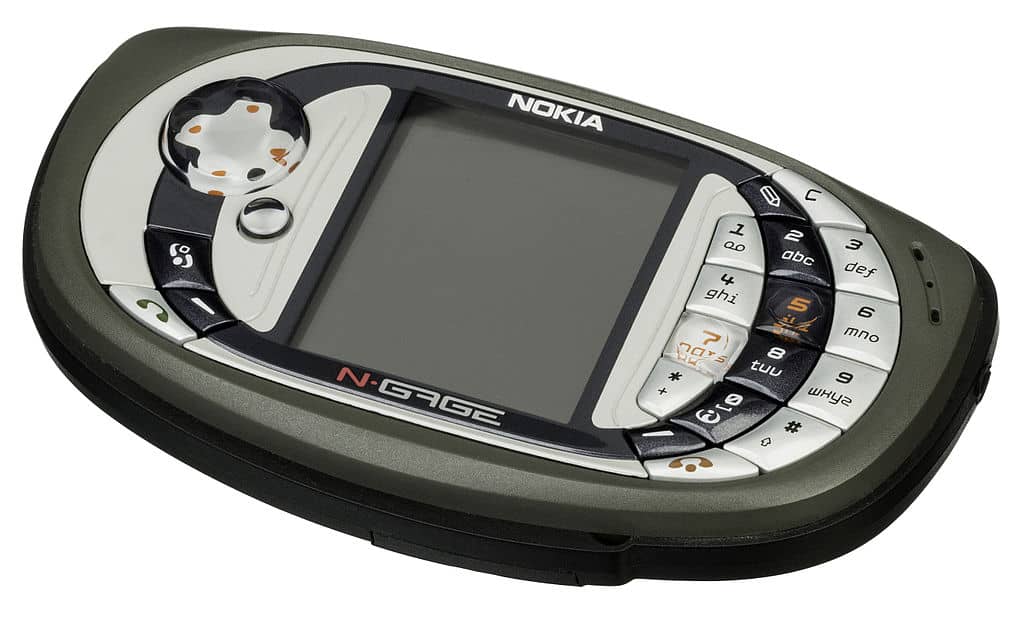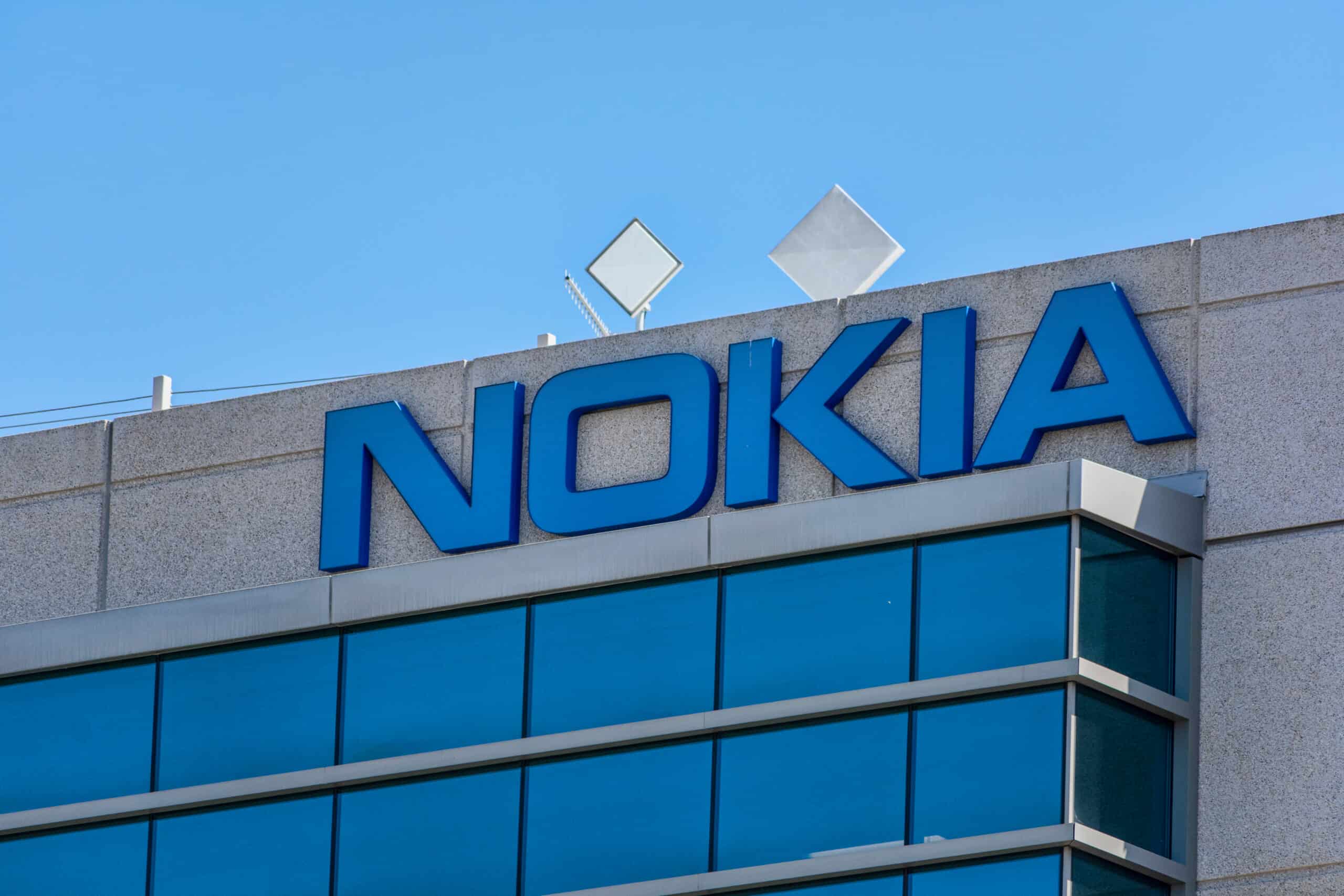Key Points:
- Nokia had what is perhaps the most unique self-contained gaming system: the N-Gage. Part cell phone, part handheld gaming console, the N-Gage hit shelves in October of 2003.
- Priced at $299, the N-Gage’s slot was beside the battery pack. To access the game slot, users had to remove the back of the phone, take out the battery, and insert or remove the game.
- During its first week alone, the N-Gage sold under 5,000 units. People were curious about the gaming console-cell phone hybrid, but not interested enough to buy the thing.
One of the cool things about owning a smartphone is that you can download and play games on it. Candy Crush Saga has nearly 2.75 billion downloads, PUBG Mobile has topped over a billion. The success of these mobile games is abundantly clear. However, not every game has a successful run. Just look at the N-Gage, Nokia‘s attempt at combining a cell phone with a mobile gaming console. While the idea would have seemingly spelled success, its sales numbers tell a different story.
How did this hybrid device come to be? Why wasn’t it as successful as Nokia thought it would be? How did the N-Gage stack up against the GameBoy Advance? And what kind of games were available to play on the N-Gage? You’ll find answers to these questions shortly. Let’s deep dive and explore the history of the N-Gage, paying attention to the buzz around its launch and the lengths Nokia went to reverse the device’s poor run.
Quick Facts
- Release Date
- 07/10/2003
- Original price
- $299[
- Discontinued
- 24/02/2006
- Units Sold
- 3 million (by 2007)
5 Must-Know Facts About the N-Gage

a dominant force in the
hand-held gaming console market.- Released in October of 2003, the Nokia N-Gage lasted just 28 months before being discontinued.
- More than 50 games were available for the N-Gage, including Spider-Man 2, Super Monkey Ball, and Tony Hawk’s Pro Skater.
- The N-Gage’s design led to the unfortunate (and unshakable) nickname “taco phone.”
- Nokia reconceptualized the N-Gage as a mobile gaming platform included in its Series 60 smartphone lineup.
- The GameBoy Advance outsold the N-Gage by 100 to 1.
N-Gage Specs
| Release Date | October 7th, 2003 |
| Type | Gaming console, mobile phone |
| Versions | N-Gage Classic, N-Gage QD |
| Manufacturer | Nokia |
| Price | $299 |
| Popular Games | Pocket Kingdom: Own the World, Pathway to Glory |
| Units Sold | 3 million |
| Discontinued | February 24th, 2006 |
The History of the N-Gage
At the turn of the century, handheld gaming consoles were all the rage. Several different iterations of self-contained video gaming systems took the market by storm. Atari had the Lynx. Bandai had the WonderSwan. Nintendo had the GameBoy. NEC had the TurboExpress. Sega had the Game Gear. And Nokia had what is perhaps the most unique of all: the N-Gage. Part cell phone, part handheld gaming console, the N-Gage hit shelves in October of 2003.
Nokia saw the success of these rival consoles and knew that cell phones were growing in popularity at the same time. So, they did the most logical thing: Combined the two into one unparalleled product. The N-Gage brought together an MP3 player, a cell phone, a PDA, a radio, and a gaming console into one taco shell-shaped device. It borrowed from the look of the Nokia 5510 mobile phone, which resembled the sideway look of a cell phone.
Priced at $299, the N-Gage’s slot was beside the battery pack. To access the game slot, users had to remove the back of the phone, take out the battery, and insert or remove the game. Needless to say, this wasn’t the most practical design in the world. Rival handheld consoles had the game slot right out in the open. What’s more, the screen was taller than wide — not unusual for a phone, but weird for video games that are usually played on screens wide screen. Its aspect ratio was an awkward 11:13.
Early Signs of Failure
While the hype surrounding N-Gage was palpable in the months before its release, its post-release performance told a very different story. During its first week alone, it sold under 5,000 units. People were curious about the gaming console-cell phone hybrid, but not interested enough to buy the thing. The device had only been out for a week, and already Nokiawas staring at an impending failure.
Not wanting to admit the console was dead on arrival, Nokia held strong to the N-Gage. They went as far as claiming more than 400,000 units had been sold in the first two weeks, yet insiders reports put the sales figures at 5,000. Nokia later admitted they lied, choosing to advertise the number of units shipped instead of units sold.
Whichever way you look at it, Nokia had a lemon on its hands. Initial pre-release predictions from the iconic cell phone manufacturer forecasted six million units by the end of 2004. In reality, they’d only shipped a million by this time. Many units remained on shelves, with prices drastically reduced by as much as $100 to clear stock. Instead of throwing in the towel, Nokia doubled down. Unfortunately for them, ignoring the writing on the wall didn’t reverse their fortunes.
The Ultimate Demise
In May 2004 — just seven months after the N-Gage’s release — Nokia put out the N-Gage QD. A “new and improved” take on the poorly performing N-Gage Classic, the the QD was a last-ditch effort to save the cell phone-gaming console hybrid from obsoletion. Smaller and rounder, the console had a game slot at the bottom. The phone’s earpiece was to the front instead of the side, just like the Classic.
Nokia was making moves to correct everything wrong with the Classic. They even lowered the price and made it available as a pre-paid phone at select retailers. Moreover, the QD cut out the FM radio, the MP3 player, and the USB port. It’s not common for second-generation devices to cut features — typically, most add, not remove — but no one seemed to miss the absence of these bells and whistles on the QD.
At the end of the day, it was just no use. The popularity of the GameBoy Advance was just too great for any rival to overcome. Then, the Nintendo DS hit. Released in November of 2004, the Nintendo DS and its subsequent versions would sell more than 150 million units. By the time the N-Gage Classic and QD were officially discontinued in 2006, they had barely hit three million. Although they gave it their best shot, the N-Gage was an undeniable failure.
The N-Gage Versions: Each Edition
Nokia put out two different versions of the N-Gage throughout its brief, disappointing run.
The N-Gage Classic
After plenty of hype and generous predictions, Nokia released the N-Gage (later renamed the N-Gage Classic) on October 7th, 2003. Games came in the form of SD card-esque cartridges, standard for this era of handheld console gaming. The phone’s OS — Symbian OS 6.1 — was used for both versions of the N-Gage and was later repurposed for Nokia’s smartphone lineup Series 60. It had an internal memory of 3.4 MB and came in one color scheme: orange, green, and gray.
The N-Gage QD

The N-Gage QD came not long after the N-Gage Classic: May 26th, 2004, just seven months following the Classic’s release. This is quite unconventional, as many cell phones today take at least a year between new versions, but the terrible sales of the Classic meant Nokia could either redesign or call it quits. This new-and-improved N-Gage was smaller, rounder, and less colorful — only orange and gray instead of orange, green, and gray. The QD fixed the Classic’s awkward game slot issue by moving it to the bottom while retaining the same OS and internal memory as the previous version.
The Public’s Response to the N-Gage
Judging by the sales figures of the N-Gage Classic and QD, the public’s response to the N-Gage was less than kind. People were certainly intrigued in the run-up to its release, but as we now know, this doesn’t always translate into sales. This is especially true of a $299 device (close to $500 in today’s cash adjusted for inflation). No amount of rebates or discounts seemed capable of fixing this sales issue.
N-Gage wasn’t even all that functional. Critic noted that the cell phone-gaming console hybrid wasn’t very good at either task. The calling function of the N-Gage Classic was too awkward to be useful, and the absurd aspect ratio of the device’s screen made gaming less than enjoyable. In short, this device couldn’t match the optimal experience of the GameBoy Advance and other rival handheld gaming consoles.
Ultimately, the N-Gage’s failure was evident to the public from the day it hit shelves (and maybe even before). 5,000 units were sold in the first week, a clear sign the public responded negatively to the N-Gage. No amount of redesigning, repurposing, or reworking was ever going to fix the flaws of the N-Gage. They were inherent to the very device itself. However, when looking at the success of smartphone games, it’s worth noting that Nokia’s head was undoubtedly in the right place.
Up Next
- The Real Reason DeLorean Failed Spectacularly Oh DeLorean…how hard the mighty fall!
- The 5 Real Reasons Polaroid Failed Did you know Polaroid fell from grace? Find out why.
- The Real Reason Solyndra Failed Spectacularly Why did Solyndra fail miserably? Read on.
- The 5 Real Reasons Netscape Failed In the realm of epic fails, Netscape is right up there.
- The Real Reason Google Glass Failed Spectacularly Here’s a doozy–the failed Google Glass.
The image featured at the top of this post is ©Michael Vi/Shutterstock.com.








